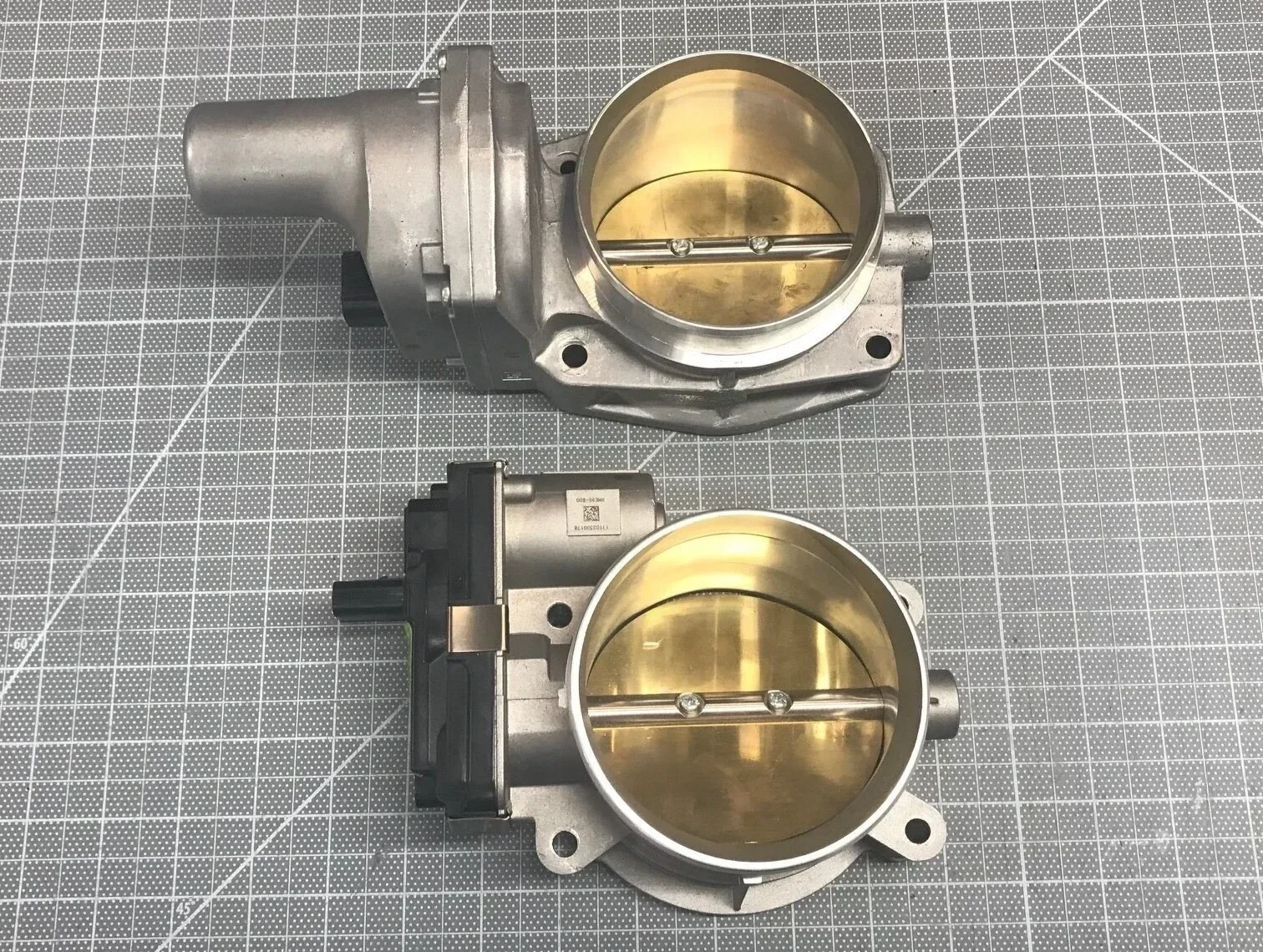One of the challenges with building a custom car is that when you change one thing it often forces other changes, some of which you might not realize for years. When I decided to go with a fully-built supercharged engine I knew that I’d have to modify the rear hoop, modify the firewall and fabricate a custom induction tube. A year and half after fabricating the induction tube I realized that the throttle body was going to block the fuel fill tube. After some scrambling, I discovered that then new LT5 throttle body was markedly smaller than the LS7 throttle body despite having a larger throat. So the induction tube went in the scrap pile, I designed and CNC’d two custom weld flanges, and fabricated new induction tube. I also had Solar Performance port and make a bunch of performance mods to the throttle body. Problem solved, right? Not so fast.
LS7 throttle body (top) and stock LT5 throttle body (bottom)
Final version of the induction tube
When designing the engine harness we discovered that the LT5 throttle body uses the SENT protocol. SENT (Single Edge Nibble Transmission) is a high-resolution, unidirectional, single-wire serial communication protocol used primarily to transmit automotive sensor data (e.g., mass airflow and throttle position). The harness guys in Germany, my two MoTeC experts and my engine tuner had never heard of it…
If I were using a GM ECU, I would have been completely unaware of which protocol was being used because it would have just worked out of the box.
Fortunately, my engine tuner, Ed Senf, dug into the MoTeC M150 documentation and found that SENT was supported. Since documentation doesn’t necessarily equal reality, he purchased a stock throttle body and bench tested it. As can be seen in the video below, the test was successful. Ed really likes the throttle body and will use it on future projects because it saves two precious analog voltage input resources (main and tracking) and uses a single universal digital (UDIG) input that often goes unused in many applications.


